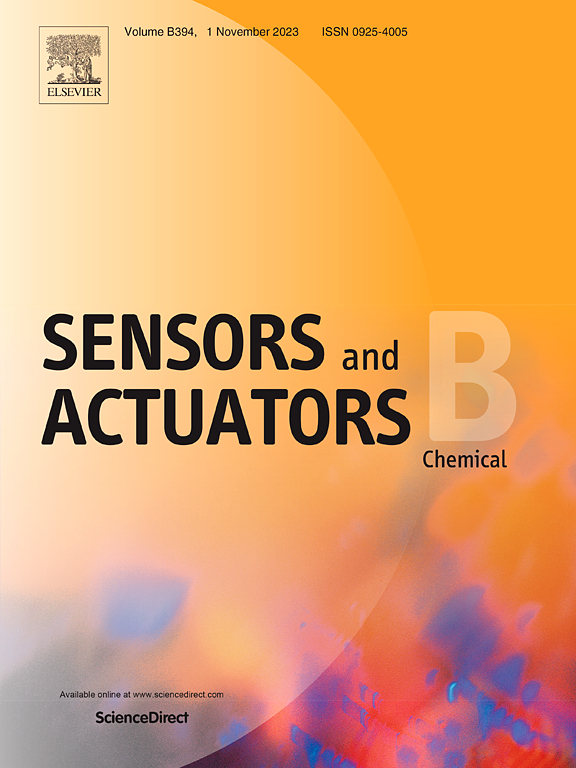Coupled cantilever biosensor utilizing a novel approach to gap-method for real-time detection of E. coli in low concentrations
IF 8
1区 化学
Q1 CHEMISTRY, ANALYTICAL
引用次数: 0
Abstract
Biosensors have become indispensable for rapid detection of pathogens and play a vital role in the monitoring of bioparticles in healthcare, environmental monitoring and food safety. This paper presents a novel microsensor consisting of a pair of coupled cantilevers. During testing, the cantilevers are immersed in a sample solution and one of the cantilevers is actively actuated to vibrate while the other is passively driven through the sample solution. To accelerate pathogen capture, dielectrophoresis (DEP) is used to concentrate the sparse bacteria in the sample solution to the gap region between the cantilevers. The captured bacteria cause frequency shifts for both cantilevers. The limit of detection (LOD) of the sensor is determined to be 15 cells/ml and signal-to-noise ratio (SNR) reaches to 12.8 and higher. For stagnant samples, high frequency shifts of up to 3.1 kHz are observed for 105 cells/ml while even for a low concentration of 100 cells/ml a substantial frequency shift of 914 Hz is recorded. Performance is also characterized at different flowrates, and significant frequency shifts up to 1.7 kHz are observed for 105 cells/ml concentration at 1 µl/min. These advancements establish the proposed biosensor as a highly sensitive, and versatile tool for detecting pathogens in diverse applications.
求助全文
约1分钟内获得全文
求助全文
来源期刊

Sensors and Actuators B: Chemical
工程技术-电化学
CiteScore
14.60
自引率
11.90%
发文量
1776
审稿时长
3.2 months
期刊介绍:
Sensors & Actuators, B: Chemical is an international journal focused on the research and development of chemical transducers. It covers chemical sensors and biosensors, chemical actuators, and analytical microsystems. The journal is interdisciplinary, aiming to publish original works showcasing substantial advancements beyond the current state of the art in these fields, with practical applicability to solving meaningful analytical problems. Review articles are accepted by invitation from an Editor of the journal.
 求助内容:
求助内容: 应助结果提醒方式:
应助结果提醒方式:


